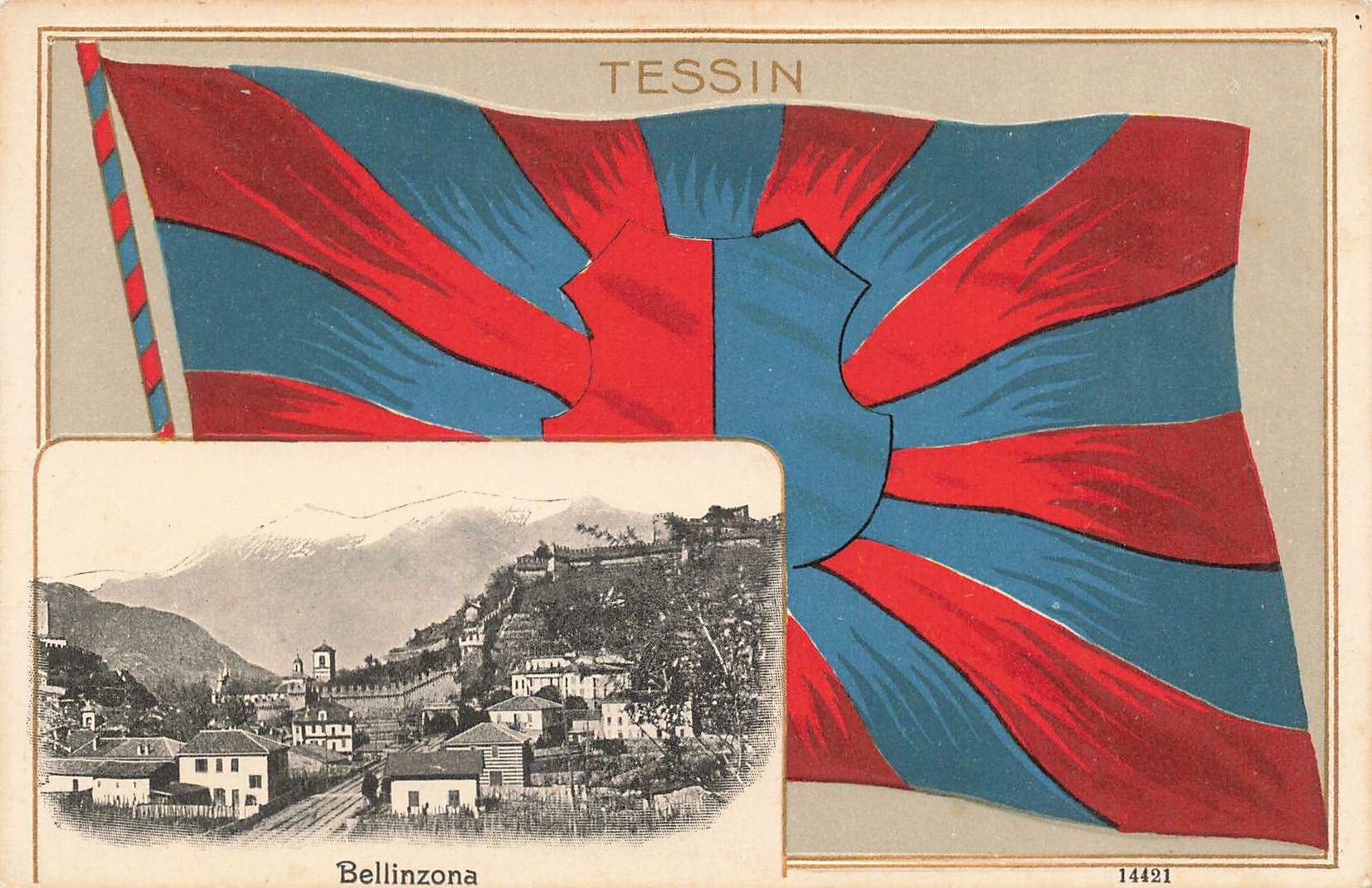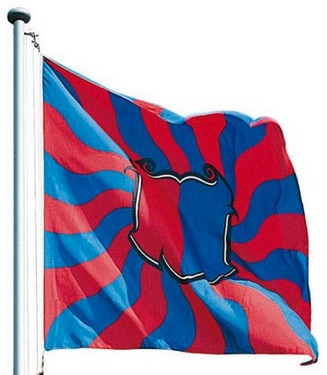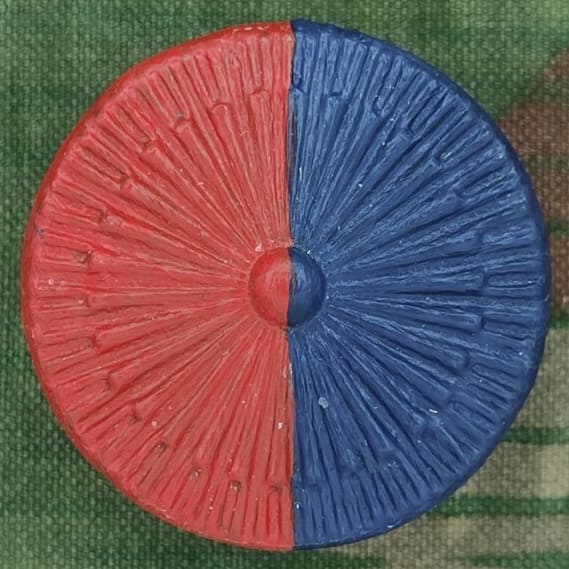![[Flag of Ticino]](../images/c/ch-ti.gif) image
by T.F. Mills
image
by T.F. Mills

Last modified: 2025-06-15 by martin karner
Keywords: switzerland | ticino | italian |
Links: FOTW homepage |
search |
disclaimer and copyright |
write us |
mirrors
Description of the Flag
Per fess gules and azure.
Horizontally divided into equal parts red over blue. Like Lucerne,
but for reasons unknown, Ticino's arms are different from the flag,
and the two are often confused. The arms are divided vertically
("per pale gules and azure"). Like several of the flags of cantons
created in 1803, Ticino's is heraldically incorrect in that tincture
touches tincture (red and blue) without fimbriation.
T.F. Mills, 3 November 1997
Symbolism of the Flag
The symbolism of the Ticino flag has been lost, but there are
numerous theories. The most plausible is that the red and blue were
derived from the predominant colours of the arms of the eight
districts which came to form Ticino. The flag may also have been
inspired by the red and blue of the Cisalpine Republic of 1797.
Less plausible theories include red for the the Swiss Confederation
and blue for the sky over Italy, thus denoting "Italian Switzerland";
or that Ticino borrowed the colours from the arms of Paris and
intended to honour the French Revolution or Napoleon. Least
plausible is the idea that red stands for the liberal party and blue
the conservatives, but neither party existed at the time the flag was
adopted.
T.F. Mills, 3 November 1997
History of the Flag
The original three Forest Cantons (Waldstätten) began expanding
southwards into Italian states as early as the 13th century. Their
conquests were confirmed in a perpetual peace signed with France in
1516 after the Italian wars. Some regions were administered by the
whole Confederation, and others by the three Waldstätten. In 1798,
Lugano and Bellinzona were organised as cantons in the Helvetic
Republic.
With the restoration of the Swiss Confederation in 1803, Lugano and
Bellinzona merged into the new Canton of Ticino, the only (entirely)
Italian-speaking canton in modern Switzerland. In May 1803, two
months after the creation of the canton, the Great Council resolved
that the arms would be red and blue but did not specify their
relative positions. The Council determined in September 1804 that
the red should be over the blue, but there remained confusion between
the arms and the flag. In 1809 the canton organised its military
forces, and adopted a red over blue battle flag with the gold
inscriptions "Pro Patria" in the upper part, and "Pagus Ticinensis"
in the lower. The plain red and blue flag was decisively established
by law in 1930.
T.F. Mills, 3 November 1997
![[Colour Flag TI]](../images/c/ch-ti_col.jpg) image
located by Martin Karner
image
located by Martin Karner
Rectangular cantonal flag, as shown in Mader (1942) (So-called
colour flag [Farbenfahne in German]).
Martin Karner
See also: STATE COLOURS in Dictionary of Vexillology
![[Flag of Lucerne]](../images/c/ch-ti).gif) image by António Martins-Tuválkin
image by António Martins-Tuválkin
Flaggen, Knatterfahnen and Livery Colours |
![[Knatterfahnen]](../images/c/ch-ti_kf.gif)
|
Flaggen are vertically hoisted from a crossbar in the manner of gonfanon, in ratio of abou 2:9, with a swallowtail that indents about 2 units. The chief, or hoist (square part) usually incorporates the design from the coat of arms – not from the flag. The fly part is always divided lengthwise, usually in a bicolour, triband or tricolour pattern (except Schwyz which is monocolour, and Glarus which has four stripes of unequal width). The colours chosen for the fly end are usually the main colours of the coat of arms, but the choice is not always straight forward.
Knatterfahnen are similar to Flaggen, but hoisted from the long side and have no swallow tail. They normally show the national, cantonal or communal flag in their chiefs.
Željko Heimer, 16 July 2000
See also: HANGING FLAG, VERTICALLY HOISTED FLAG, LIVERY COLOURS in Dictionary of Vexillology

 images located by Martin Karner
images located by Martin KarnerAt the beginning of the 20th century, flamed flags were still in use, with the white cross replaced by
a (baroque) shield in the centre of the flag. These decorative flags had been used until WWII and then
somewhat forgotten in preference of the current cantonal flags. [Today they are being
produced again, see right image]
Pascal Gross, 30 June 2002
See also:
logo.jpg) image located by Martin Karner (8 May 2024)
image located by Martin Karner (8 May 2024) image located by Martin Karner
image located by Martin KarnerCockade for the cantonal troops' headgear (regulation from 1869, size: ca. 40 mm, reverse side).
Martin Karner, 14 March 2025
See also: Cockades (Swiss Army)